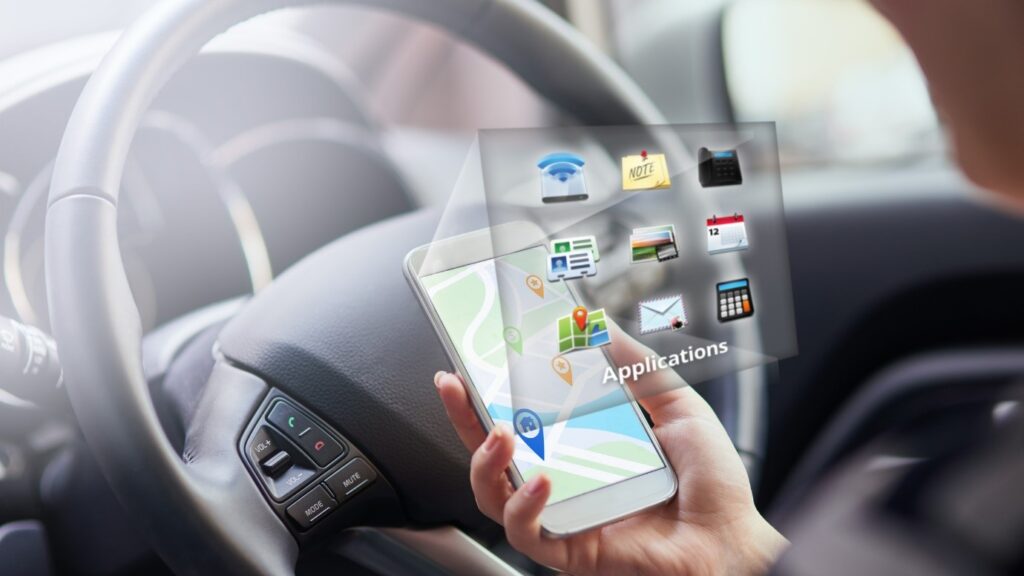
When one thinks of the unwise use of technology in a moving vehicle, the obvious example is someone who is texting and driving. By now, it’s common knowledge that doing so is very risky driving behavior and isn’t recommended.
But what about technology options that increase safety rather than raise the potential for accidents? Unbeknownst to many drivers, there are a wide variety of options out there. Here are three ways driver-friendly tech can keep you and others safe on the road.
Block Distractions
The ability to multitask is generally something to be proud of. When it comes to multitasking while at the wheel, however, it’s a habit to be avoided at all costs.
Distracted driving is the cause of 3,000-3,500 deaths per year in the United States. That figure doesn’t even take into account injuries in non-fatal crashes.
At this time, there isn’t technology out there that stops a driver from eating or staring at roadside cows. But blocking out distractions from your phone? That’s an entirely different story. There are currently multiple apps available that eliminate or vastly reduce your phone’s available functions while driving.
One of the more well-known options is called OneTap. This app can either be manually engaged before you hit the road or automatically initiated when your vehicle starts moving. When active, the software will ignore incoming calls and texts and automatically respond with a response that you are driving and therefore unavailable.
If you don’t want to download an app specifically to lessen distractions, that’s OK. You still have options.
Nowadays, most smartphones come equipped with a “do not disturb” feature. You can enable this whenever you begin driving. Not only that but you can typically exempt a select list of individuals who are allowed to break through the block. This could be useful, for example, if you have another driver who is supposed to be following you and gets separated in traffic.
Monitor Warning Signs
If you fall asleep at the wheel, there’s a wide range of obvious (perhaps even deadly) consequences. Hopefully, you’ll be lucky enough to jerk back awake as soon as your car drifts a foot to the side. At the other end of the spectrum, you might passively drift into oncoming traffic and have a collision with another car or motorcycle.
Various apps can be downloaded for use with your everyday devices.
For phones, some apps can monitor your eye movement and rate of blinking. Alternatively, smartwatches can measure your heart rate. When these levels fall below a certain threshold, an alarm can be triggered to sound an alert.
If you don’t want to use your phone, you can even purchase external devices to track your eye and head movement. On the cheaper end of the spectrum, various devices can attach to your ear and emit an alarm when you nod. More robust devices attach to the windshield and note eye movement and other facial warning signs of fatigue.
Drowsy driving isn’t the only condition that can be avoided and detected through technology, though. It’s fairly common for individuals who have been caught driving while intoxicated to be required to install an ignition interlock.
A court order is not required to do so, however. If you have made poor decisions in the past getting behind the wheel after drinking, you can voluntarily have an interlock installed. The device requires the driver to breathe into a sensor. Your vehicle will not start until the breath registers as alcohol-free.
Review Your Driving Habits
Because most of us take our cell phones with us wherever we go, there are useful opportunities to track data through apps. Numerous family tracking apps automatically send weekly or monthly driving reports to show instances of speeding or hard brakes. Several vehicle insurance companies offer safe driving discounts based on data collected through apps. Check with your agent and ask what’s available for policyholders.
Other software packages are designed to make a “competition” out of safe driving. For families with teenage drivers, you can institute a reward system for the safest driver of the month. It may prove far more effective than scolding and lectures. And who’s to say that parents can’t get in on the action as well? By making it a family competition, everyone can be held accountable and stay safer on the road.
Another important aspect of responsible driving is the maintenance of your vehicle.
By keeping a repair and maintenance log, drivers and car owners can make sure they are not letting upkeep be ignored. Record dates and mileage of oil changes, tire replacements, and other necessary repairs. Doing so makes it more noticeable when those tasks have fallen by the wayside. If you review your repair history and find it lacking, you can take steps to find alternative reminder methods.
One way to use technology to your advantage is by setting regular reminders in an online calendar such as Outlook Calendar. Depending on how many miles you put on your vehicle, you can set auto-reminders every three or six months. When the reminder notifies you, verify how many miles have been driven between oil changes and measure your tire tread. You can also make sure your battery terminals are free of corrosion at this time. You can more easily assess your maintenance habits by going back through the calendar to verify task completion.
Use Technology on the Road for Safety, Not Distraction
Oftentimes it feels like technology has made the road a more fast-paced and dangerous place. From texting to phone calls to LED billboards, it seems distractions are everywhere both inside and outside your vehicle.
But knowing the various forms of available technology and utilizing them properly can do wonders for your driving habits. Accordingly, see what’s out there and how it might be able to protect both yourself and others as you get from point A to point B.








